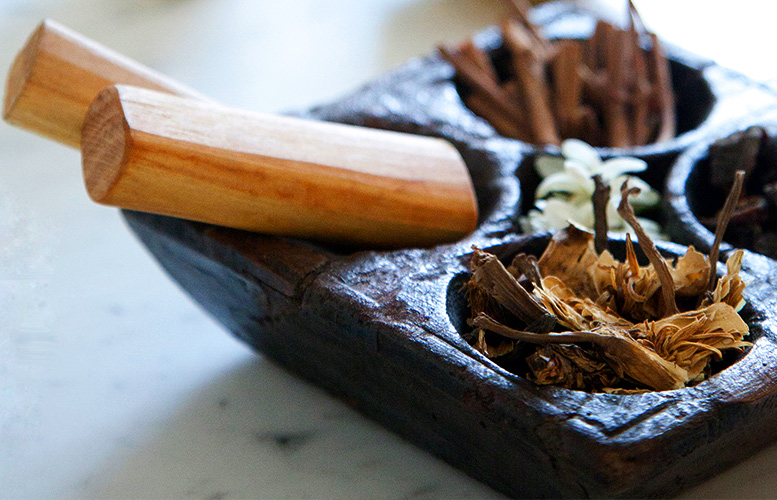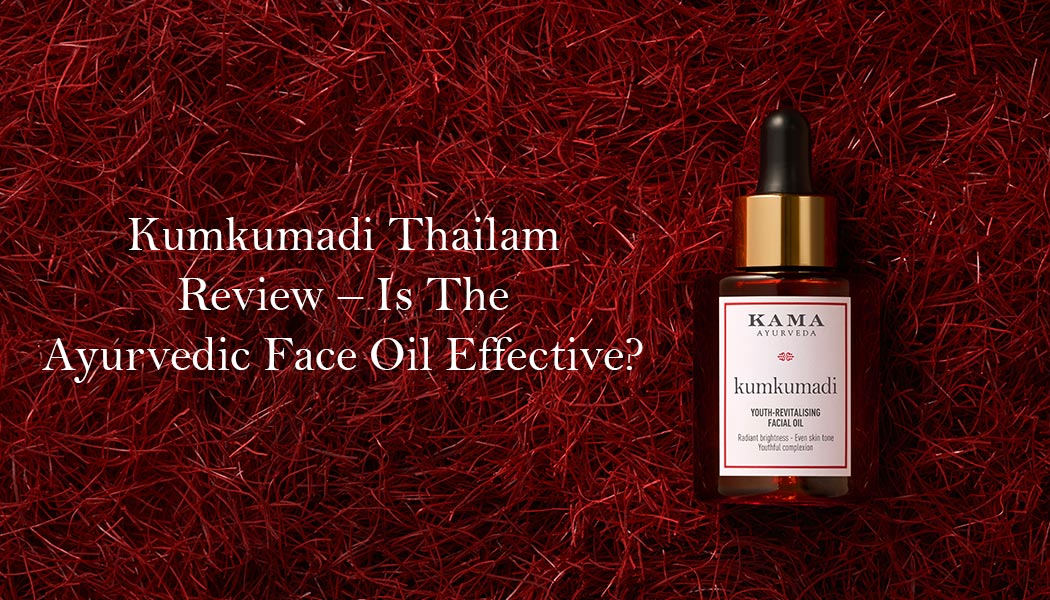- 10 August 2016
- 6 mins read
Q.No: 1 : What are the most popular Ayurvedic Ingredients being used in Kama’s products? What are their benefits?
The most popular Ayurvedic ingredients used in the products and their benefits are as follows:
- Sesame Oil
- The vitamin E found in sesame oil acts as an excellent antioxidant.
- A natural sunscreen
- Deeply moisturizing
- Slows down the skin ageing process
- Helps in detoxifying and repairing damaged skin cells
- Its anti-inflammatory property helps prevent bacterial infections
- Gooseberry – Amla
- Super rich in Vitamin C
- Amla’s cooling property makes it ideal for all skin disorders
- Its strong antioxidant properties help in protecting skin from infections
- Slows down the appearance of wrinkles and fine lines
- Minimizes breakouts and oiliness
- Gives the skin a natural glow
- Vetiver
- Regenerates skin tissues
- Speeds up the fading of scars, dark spots and other marks
- Rebuilds the skin surface
- Minimizes acne
- Supports and strengthens the skin’s connective tissues, and fights against sagging.
- Indian Madder – Rubia Cordifolia
- Gives the skin a natural glow and lustre.
- Helps in minimizing pimples, freckles and discoloration
- Cow’s Milk
- Contains lactic acid, which is a gentle and effective exfoliant. This peels away dead layers of skin cells, revealing a fresher and supple layer underneath.
- Soothes dry and itchy skin
- The Vitamin A and D present in the millk improves skin strength and tone.
- Liquorice
- Liquorice’s main component – glycyrrhizinate – is an effective anti-inflammatory formulation and moisturizer.
- Liquourice has the ability to lighten the skin and to prevent further hyper-pigmentation.
- Cardamom
- Hydrates skin
- Helps in warming the body, resulting in increased blood circulation.
- Nourishes and soothes skin.
- Sida Cordifolia
- Sida Cordifolia is known as “Bala” in Ayurveda, meaning ‘strength.’
- Used to increase bone, muscle and joint strength.
- Acts as a coolant.
- Can be used by all body types
- Improves skin texture and gives a natural glow
- Ashwagandha
- Confers immune system protection
- Combats the effects of stress
- Used as an adaptogen to help the body cope with daily stress and as a general tonic.
- Decreases inflammation
- Prevent the effects of ageing
- Can treat wounds and backaches.
- Jujube – Zizypus Jujuba
- Loaded with amino acids, jujube helps the body form proteins.
- Relieves stress and anxiety
- Helps lower blood pressure
- Has antioxidant properties which delay the skin ageing process.
- Has anti-carcinogenic properties
- Reduces wrinkles, dryness, redness, and swelling provides relief from sunburns.
- Turmeric
- Loaded with high antiseptic and antibacterial properties that help cure acne.
- Reduces blemishes
- Prevents blackheads
- Reduces inflammation and evens out skin discolouration
- Cures eczema & psoriasis
- Prevents dry skin
- Diminishes wrinkles
- Brightens skin
Q.No: 2: How technology has helped in improving the efficacy of the existing ingredients? Can you give us any examples?
An important technology that has been developed for improving the efficacy of the existing Ayurvedic ingredients is through Carbon dioxide or Super Critical Extraction. A further advanced version is the Post Super Critical Extract.
The Co2 extraction process consists of pumping pressurized carbon dioxide into a chamber filled with plant matter. When carbon dioxide is subjected to pressure it becomes “supercritical” and has liquid properties while remaining in a gaseous state. Because of the liquid properties of the gas, the Co2 functions as a solvent, pulling the oils and other substances such as pigment and resin from the plant matter. Thus, the difference between CO2, or supercritical, extraction and traditional distillation is that CO2 is used as a solvent instead of heated water or steam. The temperature involved in the supercritical extraction process is around 95 to 100 degrees F as opposed to 140 to 212 degrees F in steam distillation.
The benefits of using CO2 extraction are as follows.
- Superior in terms of both freshness and the breadth of active constituents left in the herb
- Full spectrum or more active constituents of the plant are realized with a potency that cannot be surpassed
- Extracts are pure and clean – free of solvent residues
- Mild operating temperature ensures product stability and quality
- The only type of extraction that unlocks the fat soluble components of the plant
PSE (Post Supercritical Extract) refers to the water soluble extract that is performed after (in addition to) the Co2 extract. The Co2 extraction delivers the fat soluble plant “goodies”, while the PSE or water extract, delivers the water soluble components of the plant.
Using these extraction procedures we get the best out of a particular plant material and using this in the formulation will provide better efficacy leading to faster results.
Q.No:3: Are there any new ingredients, new inventions that are being used these days?
No, there are no new Ayurvedic ingredients. Ayurvedic Ingredients have been healing people for more than 4000 years. The science of efficacy with focus on Ayurvedic ingredients clearly states how modern studies are proving ancient traditions. For example, curcumin is an ingredient which is gaining popularity now, but actually is one of the oldest ingredients that has been used in foods and traditional healing for thousands of years. Another example is Aloevera -- people don’t realize it is an Ayurvedic ingredient.
The "bricks and mortar" architecture of the skin's stratum corneum prevents active ingredients in skincare products from entering the dermis. As a result, existing skincare treatments have very limited efficacy and tolerability. Modern medicine focuses on destroying pathogenic invaders from outside the body; Ayurveda focuses on making the body's defences as strong as possible by promoting inner balance and strengthening the immune system.
Liposome technology is making its entry into the Ayurvedic industry. It provides a superior method of active ingredient delivery. This breakthrough method allows active natural ingredients to penetrate through the outer layers of the skin (epidermis) to reach the inner layers of the skin (dermis). Liposome bilayers can then fuse with other bilayers such as the cell membrane and deliver the liposome contents to the skin.
Q.No:4: Is the Vata, Pitta and Kapha formulation still followed in Ayurvedic formulations?
Ayurveda heals by identifying your unique dosha pattern.
Each dosha - Vata, Pitta and Kapha - combines the five elements of the universe (air, fire, water, earth, space) in a particular manner.
All the cells in the body contain all three doshas.
To remain alive, the body has Vata, or motion, which allows it to breathe, circulate blood, pass food through the digestive tract, and send nerve impulses to and from the brain.
It has Pitta, or metabolism, which processes food, air and water throughout the entire system.
It has Kapha, or structure, to hold the cells together and form muscle, fat, bone and sinew. Nature needs all three to build the human body, or what is known as the prakriti.
The three doshas can be combined in three possible ways to arrive at three different body and behavioral types: Vata – Pitta, Pitta – Kapha, and Kapha – Vata, because usually there is one predominant dosha.
Therefore the principles of Vata, Pitta and Kapha are followed in preparing various Ayurvedic formulations.
You also have tridoshic oils prepared with herbal extracts that act to balance Vata, Pitta, and Kapha. These blends can help balance and alleviate aggravations of all three doshas, when symptoms are complex and variable. Tridoshic oil promotes the elimination of toxins, and creates a feeling of relaxation. Through massage, these oils can soothes the skin and muscles, nourishes the nervous system.
Q.No: 5: Which ayurvedic ingredients are most common and preferable in the monsoon, and why?
The months of July and August represent the varsha ritu or the rainy season. According to Ayurveda, this is the time for pitta aggravation. All the heat that accumulates in the body in the greesham ritu (summer season) is aggravated in the rainy season. There are a number of skin diseases prevalent in the rainy season.
MV NOTE: This seems to be about a different topic: how ayurveda works, instead of ‘monsoon’.
The skin has six layers which extend to the deeper levels of the body. A skin disease can be rooted deeply in the skin’s fat, muscles, and blood. Ayurveda cures the disease by treating its cause, not just its symptoms. Since most diseases are deep rooted, it is often difficult to fix problems quickly. Ayurvedic skin treatments may take a few weeks to remove the symptoms, but the diseases are treated permanently. Skin diseases are caused due to imbalances in all the three doshas -- the prime dosha involved is pitta. Pitta symbolizes heat or fire. Therefore, all those foods or activities that increase the fire element in the body should be eliminated.
Ingredients which could be used during the monsoon are below:
- Manjista - promotes healthy, vibrant skin. In Ayurveda, removing natural toxins and excess pitta from the blood is an important factor in supporting health skin. Manjista is the foremost blood cleanser in the Ayurvedic pharmacopoeia.
- Neem - bitter and very cooling. Neem is known for its effectiveness in dealing with nearly all types of pitta imbalances. Supports healthy skin and a healthy digestive environment.
- Shatavari - potent rejuvenator that increases energy, bolsters the immune system and supports proper digestion. Shatavari also has a special affinity for the female reproductive system and is used by women of all ages to foster reproductive health and a balanced cycle.
- Brahmi - Traditionally used to promote memory intelligence and longevity, Brahmi is the foremost rejuvenative for the brain and nervous system. When brahmi oil is applied to the head and feet, it cools the system and promotes sound sleep.
- Amalaki - Nourishing and cleansing, this potent antioxidant assists natural internal cleansing and gently maintains regularity. Commonly taken as a substitute for Triphala by those with excess heat (pitta) in the digestive tract.
Bhringaraj - Highly reputed for its ability to promote healthy hair growth and as a rejuvenative for the mind. It helps calm Pitta emotions like irritability, impatience and judgment.










